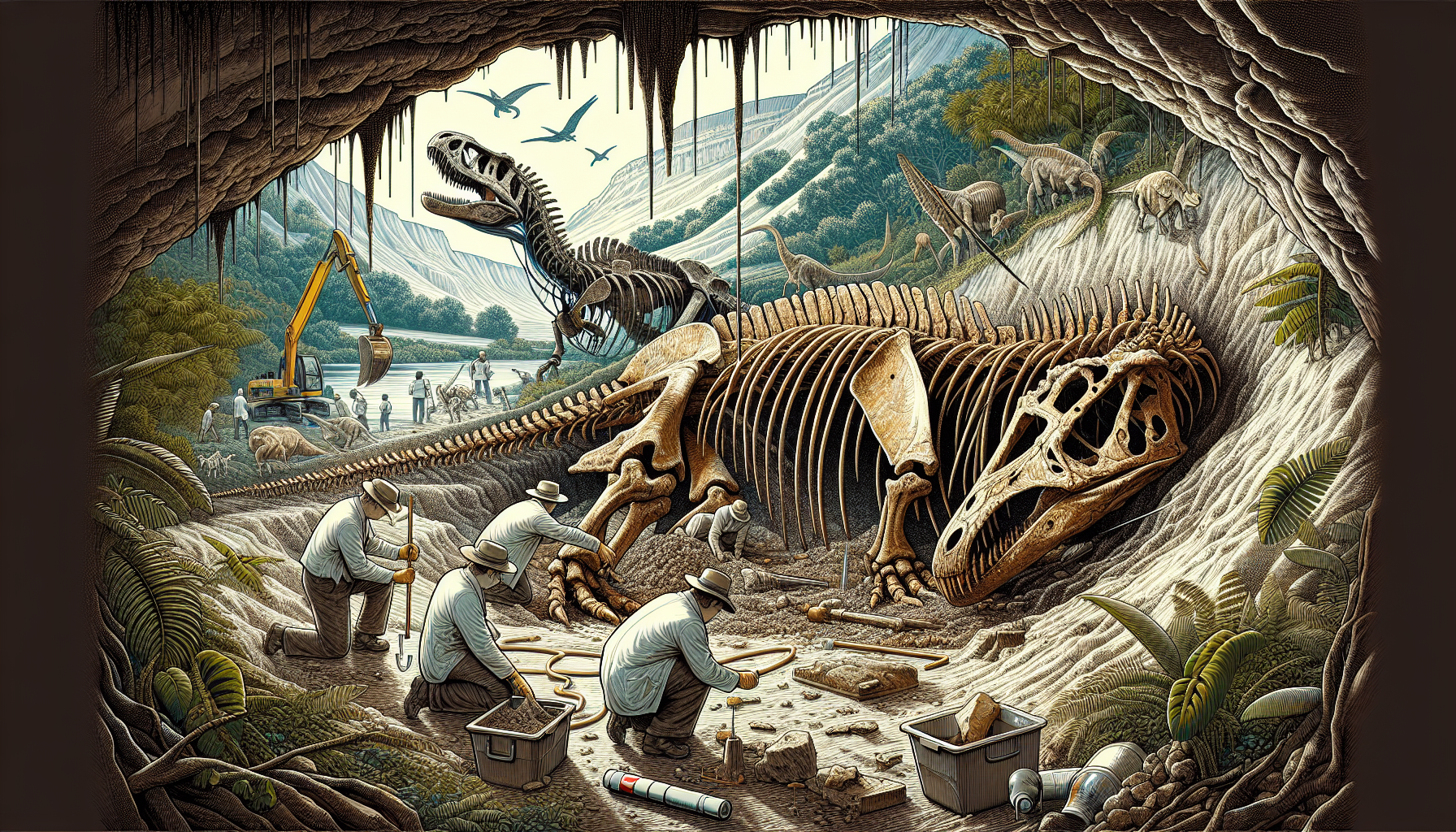Title: Dragon Princes and Evolutionary Tales: How a Mongolian Discovery Reshapes the Dinosaur Narrative
Hello, curious minds,
Every once in a blue moon, a discovery emerges that reshuffles the grand timeline of our planet’s past. Today, it seems, is one of those days. Hidden within the collection of a Mongolian museum lay secrets etched in bones, waiting to upend our understanding of one of nature's most notorious giants. I’m talking about tyrannosaurs—the fierce predators that ruled with jaws of steel.
Step into the world of Khankhuuluu mongoliensis.
Ancient Bones, Modern Revelations
In the deserts of Mongolia, where the echoes of prehistory whisper through time, scientists unearthed two skeletons that have thrust a new player into the spotlight of evolutionary history. Known as Khankhuuluu mongoliensis, this species "rewrites" the family tree of tyrannosaurs—those colossal carnivores whose legacy is tattooed into our planet’s rocky crust.
Picture this: 86 million years ago, long before a T.rex carried the crown of terror, this "Dragon Prince" quietly paved the evolutionary path.
From Shadows to Sovereignty
While T.rex might don the title of 'king' in the dinosaur kingdom, Khankhuuluu represents its princely precursor. Professor Darla Zelenitsky of the University of Calgary sheds light on the narrative: the early tyrannosauroids were "really small, fleet-footed predators." They were the stealthy hunters lurking while the big players dominated the Jurassic world.
Jared Voris, a PhD student, chronicles the evolutionary shift—Khankhuuluu was transitioning from timid hunter to the gargantuan beasts we now famously equate with the T.rex. Imagine a lineage leapfrogging from a 750 kg sprinter to an 8-tonne heavyweight champion. Khankhuuluu marks a stepping stone in the journey from modesty to might.
The Physiological Ballet of Evolution
Let’s talk about those killer features. The anatomy of Khankhuuluu shows evolutionary hints of the power-packed jaws that would enable future tyrannosaurs to crush bones like breadsticks. The skull nuances, as Voris notes, foreshadow the devastating bite forces that made later tyrannosaurs apex predators.
To put it into perspective, think of Khankhuuluu as the blueprint—the version 1.0—setting the stage for tyrannosaurs to graduate from localized hunters to continental conquerors.
Crossing Continents, Shaping Evolution
A remarkable tale in the journey of these ancient giants is their migration mosaics. Moving between Asia and North America, facilitated by ancient land bridges, they found and monopolized ecological niches. This geographical dance explains the diverse branches within the tyrannosaur lineage, highlighting how mobility molded evolutionary destiny.
A Text Across Time
Imagine the thrill of revelation. Jared Voris recalls the eureka moment—a text to Prof. Zelenitsky sharing the suspicion of a new species. It’s moments like these that remind us of the living, breathing nature of science, constantly evolving as much as the subjects it studies.
Before T.rex claimed its lethal legacy, Khankhuuluu walked, a harbinger of the grandeur to come. As Prof. Zelenitsky poetically puts it, "before tyrannosaurs became the kings, they were princes."
Reflecting on the Echoes of the Past
Every fossil unearthed, every skeletal jigsaw assembled not only reconstructs past worlds but enriches ours. This discovery doesn’t merely reshape the tyrannosaur's lineage; it echoes into our understanding of evolutionary intricacies. These are more than bones; they are cultural artifacts of natural history, depicting tales of adaptation, survival, and transformation.
So, dear readers, as we peer into the abyss of our geological history, let us celebrate these 'Dragon Princes' whose silent reign laid the groundwork for the dinosaur royalty that continues to captivate our imagination today.
Until next time—embrace the fossils beneath your feet and the stories they hold.
Yours in the pursuit of ancient tales,
A Seeker of Earth's Secrets

